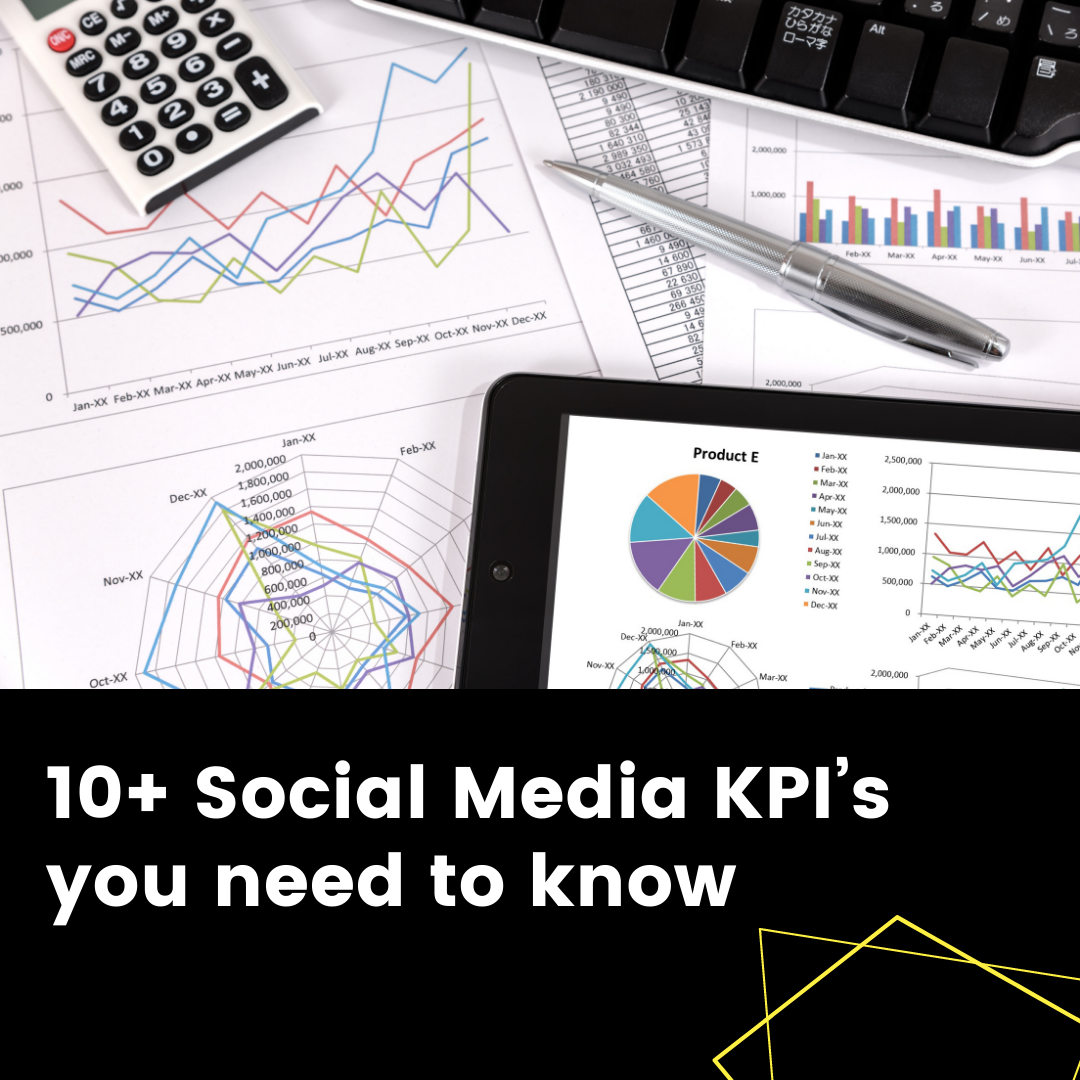The impact of social media marketing is notoriously hard to measure. If you’re not generating sales through social media, does it even matter how many likes or followers you get? How do you translate your social media metrics into valuable insights?
The #1 reason that many marketers balk at social media is that it’s challenging to assess your ROI. You could net thousands of followers, but if only a few of them turn into customers, is it even worth having a social media account?
That depends entirely on what you want to achieve and which numbers actually move the needle for your business. Let’s go beyond the vanity metrics and start looking at the Key Performance Indicators (KPIs) you should consider in your social media marketing strategy.
Introduction
In reality, social media involves much more than likes and followers. When evaluating their social media KPIs, most marketers categorize them into four main outcomes: Outreach, Engagement, Conversion, and Retention.
Outreach describes how well your social content attracts new visitors. If you’re using social media as a top-of-the-funnel channel, you’re publishing content that’s specifically designed to bring in new prospects. Those people may not convert on your social channel, but that doesn’t mean you didn’t make an impact. Outreach KPIs cover views, follows, and other ways that your brand is exposed to new people, whether through tags, targeting or organic exposure.
Engagement is the next step up from outreach. This is how well your social content garners positive interaction among your audience, including current followers, people who are tagged by your followers, and anyone who stumbles across your content. Engagement includes comments, tags, and shares.
Conversion is what most social media marketers consider in their KPIs, although as we’ll discuss, that’s a limited point of view. Conversion refers to how well your social content gets people to take the desired action. The primary conversion KPI is clickthrough, whether that’s to a product page, landing page, or something else.
Retention is an important yet oft-neglected measure describing how well your social content gets current customers to re-engage with you, whether that is through user-generated content, taking care of complaints, or getting customers to purchase again. It’s more expensive to get new customers than to attract new ones, so retention should absolutely be part of your social media marketing strategy.
Before creating any content for your social media, you must decide which one of those four purposes it will serve. That, in turn, determines which metrics matter for a given piece of content. This brings us to another point: you don’t need to rely on one or two KPIs across the board. In fact, you should absolutely assess your KPIs on a per-campaign basis. It may not matter if you get a lot of conversions from a general-interest post designed to attract new followers. In contrast, you should look for conversions from a middle-funnel post that’s designed to turn your leads into customers.
Here’s an example: if you post something on your social media with the goal of outreach, you should use the outreach KPIs to judge its performance. How many followers did you get? Did your existing followers tag new people?
If you grade the performance of that post using the KPIs for engagement, you will be misjudging its performance.
In sum, a good social media strategy will contain campaigns that touch all four of these categories. To maintain a holistic social profile, make sure that prospects in each stage of their buying journey can receive value from your social media presence. You don’t want all your posts to be targeted toward new prospects who have never heard of you or bottom-of-the-funnel leads who are ready to buy. Aim for a mix!
KPIs for Outreach:
Let’s dive deeper into outreach campaigns and which KPIs you can track. Remember, these types of social posts are intended to reach new people and get them interested in your brand. Common outreach campaigns touch on “hot topics” in the industry or tap into general information-seeking or browsing. The content answers a question or piques someone’s curiosity.
The goal of outreach posts is twofold: (a) to spread wide and spark new conversations and (b) to attract interest in your brand. These are typically top-of-the-funnel posts, so you should not be too concerned if they lead to sales. That’s not the point.
Instead, look at these KPIs:
Total Reach: This is the number of people who saw your post. Assuming all other factors are equal, reach is a simple measure of exposure.
Total Impressions: This is the number of times your post appeared on someone’s feed. Don’t confuse this with reach; the same person may see your post multiple times. For that reason, impressions can be tricky to measure. It’s also worth noting that an impression does not mean someone actually read your post.
CPM (Cost Per 1,000 Impressions): This metric is more applicable to paid campaigns (e.g. promoted posts on Facebook). It’s just what it sounds like: the amount you paid for your cost to appear 1,000 times on people’s feeds. Unfortunately, this is not necessarily 1,000 unique viewers. (See Total Impressions.)
Follower Growth Rate: You can calculate this by dividing your number of new followers (for any given period) by your total followers, then multiplying by 100. This measure is a bit more insightful than simply tracking your follower count from month to month, because you will lose followers (it’s just part of social media). Your follower growth rate can help you evaluate how effective your outreach content is for a given time period.
KPIs for Engagement:
Engagement posts are designed to get your current following to interact with you on social media. The content assumes that people already know your brand and trust your brand authority. These types of campaigns will likely touch on common struggles and victories in your industry or how your followers can learn from you. They may also include campaigns designed to get your followers to comment, like, share, etc.
Engagement posts shouldn’t be measured in terms of impressions or reach. It just doesn’t matter as much if fewer people see them — as long as they engage!
So, focus on these KPIs for engagement posts:
Comments (Total & Average): Comments are gold on most social platforms. Posts with more comments rise to the top of the feed. So, it’s definitely worth counting your comments. However, be cautious of spambot comments that don’t actually contribute to your brand’s growth. That’s why it’s a good idea to measure your average comments per post in addition to total comments.
Likes (Total & Average): Likes are the bread-and-butter of social media. They’re generally a sign that people have both seen your content and found it relevant to your interests. Some marketers consider comments to be worth more than likes, but that’s not always true. A single like from an engaged follower arguably does more for your reputation than several comments from a spambot!
Shares (Total & Average): There’s nothing better than when people share your content with their friends — who are almost always new potential fans! Shares will be relatively rare compared to likes and comments, so they’re often a good indicator of a campaign’s success.
Clicks (Total & Average): In some cases, your engagement posts will get clicks that aren’t necessarily conversions, e.g. if someone clicks on a sponsored post or video. Pay attention to your Clicks KPI content where someone has to click to see the full campaign.
Average Engagement Rate: Want to put it all together? Add together likes, comments, and shares, then divide it by your number of total followers. Then, multiply by 100. The higher this number, the more of your followers are actually engaging with your content. If the number is low, you may have a lot of fake followers — or you’re not publishing content that resonates with your current following.
KPIs for Conversion:
Conversion posts are ideal for warm-to-hot traffic, e.g. people who are near the bottom of your funnel. Your goal here is to get people to take the action that you want them to take. This can be reading a blog, visiting your website, or even sharing your content. This type of content should have a ‘conversion goal’, and should be measured by how effectively they achieve that conversion goal.
For example, if you’re sharing a post about your most recent blog with a conversion goal of people reading that blog, you would judge that campaign’s performance by how many people clicked through to read the blog. Overall impressions, likes, and even comments aren’t as important if people aren’t converting.
With that in mind, use these KPIs to assess your conversion campaigns’ results:
Conversion Rate: This is the number of people who take the action you want, whatever that is. It could include making a purchase from a shoppable Instagram post, sharing a post with their friends, etc.
Clickthrough Rate: For content that links to other content (e.g. a blog, landing page, video, etc.), the clickthrough rate is how many people click the link. This is a good metric because most people who see your post won’t click through, so this rate shows you how many followers are nearing the bottom of your funnel.
Total Website Visits: If you’re funneling traffic to your website from various social media content (e.g. your Instagram bio, various Twitter posts, etc.), measuring your site traffic from those channels can show you how effectively your social media is driving leads to a more conversion-friendly platform.
Average Website Visits from Each Platform: Break things down further by measuring your visits by each platform. If one platform hardly ever drives traffic to your website, it may not be worth maintaining that platform. (Of course, you should assess your KPIs for the types of campaigns you tend to run on that channel.)
Purchase Rate: This metric is simply how many leads convert to a purchase. It’s most relevant for shoppable Instagram posts, sponsored Facebook posts leading to a product page, etc.
Cost Per Click: If you’re promoting or sponsoring a piece of content, you can see how much you’re paying for each person who clicks through. This is crucial to evaluating your ROI — especially if many people click through but don’t ultimately make a purchase.
KPIs for Customer Retention:
Social media isn’t just for attracting and converting new customers. Your existing customers will often follow you on social, so don’t leave them hanging! Retention social posts are specially crafted to encourage past customers to continually interact with your brand. This can look different for many companies, based on your product or service, but the common goal is to continue building a relationship — ultimately, with a loyal customer.
If you sell products, you probably want to maintain previous customers’ interests in you and recommend related products — or upgrades to their previous purchase. For service-based brands, your goal might be to get customers to post about their experience with you or share your posts with their friends.
In either case, you’ll also want to respond to reviews — both negative and positive. This demonstrates your continuing commitment to providing good value and customer service.
Measure the following KPIs for retention campaigns:
Customer Lifetime Value (LTV): How much revenue do you generate from each customer? This KPI requires cross-channel metrics, but it’s well worth measuring so you can see how effectively you retarget previous customers and encourage them to keep buying.
Cost Per Lead: How much do you spend to get someone into your funnel? This metric may be derived from your cost of acquiring them as a follower on your social channel, then remarketing to them.
Repeat Purchase Rate: To assess your social media’s role in encouraging customer loyalty, divide the total customers who have made multiple purchases from a given social channel by the total number of purchases made within the same time period. Then, multiple by 100. This KPI will help you assess which social platforms are most effectively encouraging repeat purchases.
The Intangible Side of Things
Ultimately, though, metrics only matter in context. Numbers that are “low” for your competitors may be just right for you, and vice versa. The benefits of a basic digital presence on any social media platform should not be overlooked. At a certain point, your content may be encouraging people to trust and buy from your brand — even if that behavior isn’t captured in your metrics.
In other words, even if your company isn’t hitting all the right KPIs and seeing the results you want, you’re likely still making an impact. Have peace of mind in knowing that social media for business is a difficult task and that just getting something up is almost always better than nothing! (However, avoid paying lots of money for sponsored posts if you’re not sure about your impact.)
Wrapping Up
The best way to learn and grow in social media marking is to make mistakes. Remember, each brand’s KPIs are unique! So, start posting, get better at tracking those posts, and use that information to inform future social media campaigns that better serve your audience in each of those four categories.
Not sure how to develop your brand’s social media strategy? Confused by which KPIs to track for a given campaign? Let Thumbstop Media help. You can rely on us for help if you any difficulties/questions with your organization’s social media. We’ll help you cut through the noise and interpret your metrics for your business.



